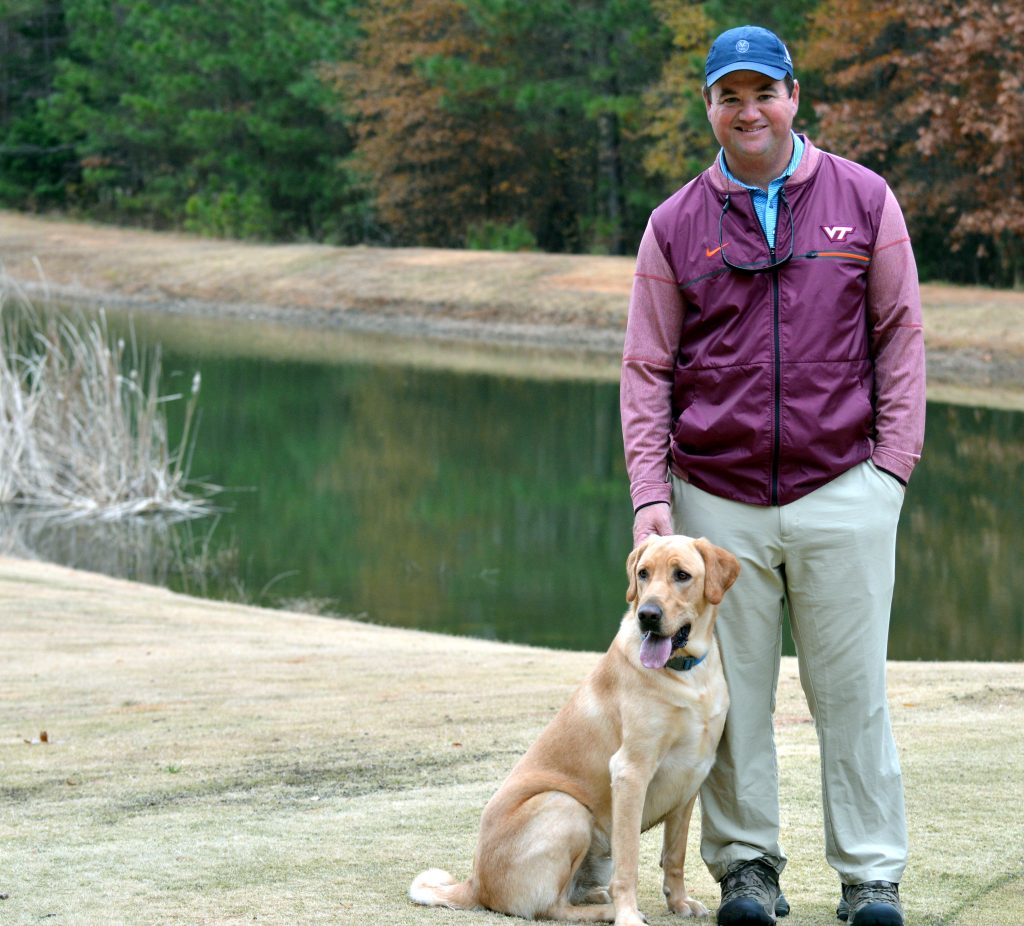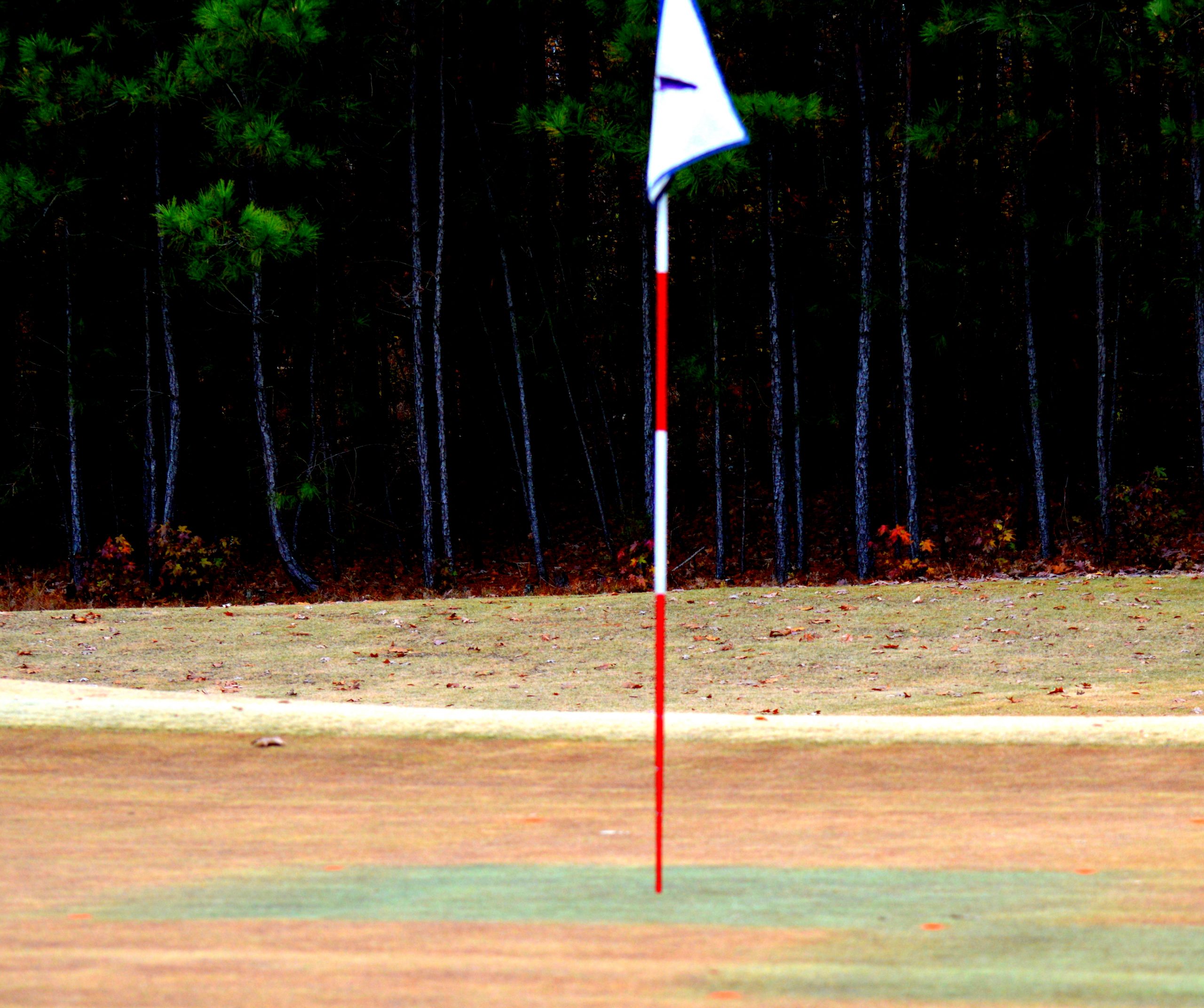
by Michael J. Stott
Back in the day the green committee admonition to a golf course superintendent was to keep the course green and playable. That job has become increasingly more difficult given environmental concerns, governmental restrictions and the specter of climate change.
Truth be told, some superintendents deal with fewer variables than others. For example, guardians of the turf in the Southwest deal with the desert and water availability concerns while New England and the Pacific Northwest superintendents enact their own strategies to tackle vexing agronomic issues in their respective belts. However, for those in transition zones like Dan Taylor at Independence Golf Course in Midlothian, the challenges can multiply exponentially.
Thankfully Taylor has a partner as he addresses the affects of climate on his greensward kingdom. Approximately 20 months ago, after some fits and starts, the project welcomed some funding from initiatives by the Virginia Turfgrass Foundation, the Virginia Golf Course Superintendents Association and the Virginia Turfgrass Council. That financial assistance began a collaboration between the course and the Virginia Tech School of Plant and Environmental Sciences.
The agronomists’ canvas is the Independence 9-hole
Mentor Short Course.
“When the VSGA originally established the short course,
one of the missions was to do research. For that research, in this case testing
the cold hardiness and overall performance of warm season turfgrass varieties, Virginia
Tech essentially has free reign on the short course,” says Taylor. “Many universities
have tests, research and rectangular plots, but nobody is playing golf on them.
Here Virginia Tech has a golf course where they are doing fungicide, cover,
aerification, etc. trials on all different greens and traffic areas. And it’s
all being played upon. That has to be unique to the industry,” he says.
IDEAL TESTING GROUND
What makes Independence an ideal test ground is location. “Richmond is squarely in the middle of the transition zone,” says David McCal l, assistant professor of Turfgrass Pathology. “We are able to grow both warm-season (bermudagrass) and cool-season (bentgrass) grasses, but none are truly able to thrive in Virginia. Most golf courses in the Richmond metro area,” he says, “grow creeping bentgrass on their putting greens where harsh summer conditions often decimate the greens despite the golf course superintendent's best efforts.”
l, assistant professor of Turfgrass Pathology. “We are able to grow both warm-season (bermudagrass) and cool-season (bentgrass) grasses, but none are truly able to thrive in Virginia. Most golf courses in the Richmond metro area,” he says, “grow creeping bentgrass on their putting greens where harsh summer conditions often decimate the greens despite the golf course superintendent's best efforts.”
Currently
the testing at Independence centers on ultradwarf bermudagrass which is bred to
thrive in the southern United States and often cannot survive in Virginia
because of freezing temperatures. However, new efforts to produce cold-tolerant
varieties with game-changing genetics have pushed the zone of adaptation
further north and have given superintendents a renewed option.
“To
the best of our knowledge, Independence is the northernmost golf course with
ultradwarf bermudagrass,” observes McCall. “This gives us a perfect opportunity
to be on the leading edge in researching winter survival of ultradwarf
bermudagrasses. As such we have a platform to provide best management practices
for golf course superintendents concerned about losing their bermudagrass
greens in the winter.”
McCall’s
on-site research associate is Ph.D. candidate Jordan Booth, CGCS, who oversees
and coordinates nearly 30 trials at Independence. He is a former golf course
superintendent with a Masters from Virginia Tech. “We are testing the cold
hardiness and overall performance of approximately one dozen warm-season
turfgrass varieties maintained at putting green, tee and fairway heights
of cut,” says McCall. “Jordan manages the overwhelming majority of these
projects in addition to assessing the use of turf covers and plant growth
regulators throughout the winter.”
In
addition to established grasses on the short course, VT researchers are
evaluating seven different ultradwarf bermudagrasses and two ultra-fine
zoysiagrasses on putting greens, three different tee box grasses and some
dual-grass systems for fairway use. “Each one responds differently to the
environment, cultural management strategies and chemical applications,”
says McCall.
How
quickly knowledge gained can be used depends on a particular project's research
goals. “Some things are quick-and-dirty studies to test product performance,” says
McCall, and can be utilized almost immediately. “Others span several years. For
instance, we have some projects evaluating organic matter accumulation over
time as it relates to ball-roll uniformity, winter survivability and soil
health. While we can share results as we learn, we won't truly know the effect
for several years. Clearly any short course learnings can be readily
transferred to Independence’s championship course.
GOLFER INPUT
Impact on daily play appears minimal says Taylor. “The golfers seem to find it interesting. With many different grasses across Independence one big concern is putting green consistency,” says McCall “since each grass responds differently to sand topdressing, aeration, fertility and a slew of other common practices. It isn't realistic to expect all of these grasses to perform the same.”
Taylor
believes that all the greens are putting the same with the possible exception
of No. 6 which is ultrafine zoysiagrass. “We maintain them all the same so they
should all putt similarly. A really, really good player might tell the
difference. The average player will not. The speed is not any different. We
keep stimpmeter speed on the short and championship courses at 11 to 11 ½ for
regular and at 13 for championship play,” he says.
To
gain golfer perspective Tech and Independence are working to create a short
course scorecard where the golfers can a rate their impressions of each grass.
“This will bring the human element into our research, as opposed to strictly
relying on objective data for every decision we recommend,” says McCall.
“Ultimately, the end game of any golf course superintendent is to provide the
best possible playing surface in the most environmentally and economically
sensible way possible,” he says.
Despite
the activity, be it painted research areas or varied strains of turf the short
course is wide open for play. “We highly encourage the traffic,” says McCall. “Some
studies impact playability more than others, but there is nothing that causes
the course to shut down. Occasionally we may have a few areas temporarily roped
off to prevent traffic, but these are typically on fairways and out-of-play
areas.
CHANGING WITH A CHANGING CLIMATE
With respect to climate change, the researchers at Virginia Tech are cognizant of its implications. “I'm not a climatologist, however I do pay attention to weather trends,” says McCall. “The climate has always been, and will continue to be, in constant change. Our job as scientists is to come up with solutions to reactively adapt to these changes now and proactively provide recommendations based on climate projections. Fifteen years ago, there were no golf courses in Virginia growing ultradwarf bermudagrasses. Now, almost 10 percent of the courses have made the transition. Many more are considering it. This is a combination of improved cold-hardiness and a tactical response to a changing climate.”
Looking
ahead McCall says he is excited not so much about climate-related developments as advancements
in technology. “Every industry, including golf course management, is
becoming big-data driven. Our group uses drones to map pest outbreaks across
golf courses and then to incorporate those maps into GPS sprayers that will
allow targeted pesticide applications. This evolution allows for less expense
through precise and reduced application resulting in smaller pesticide
footprints.
“Beyond
drones and GPS technology, the turf industry is also evolving with the use of
various portable and in-ground sensors to manage soil moisture, pest outbreak
prediction models, timed chemical applications and advanced DNA screening to identify
and quantify the presence of emerging pathogens. To this end we will
continue to use Independence as one of our proving grounds,” says McCall. “We
are pleased with our progress so far. I couldn’t in my wildest dreams imagine
this would play out as it has. We are a work in progress, but have come a long
way in a short time.”
Notes
Taylor, “Virginia Tech embraces the partnership; we love it. It’s turned into a
great marriage so far.”